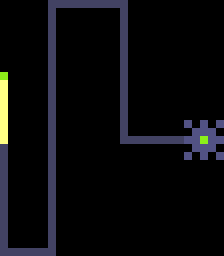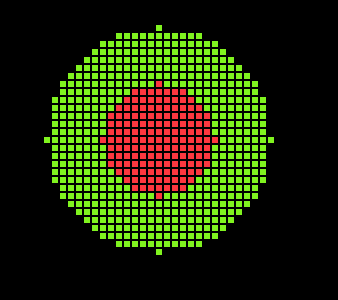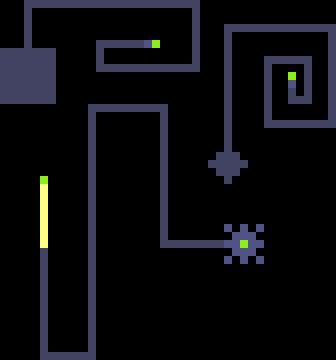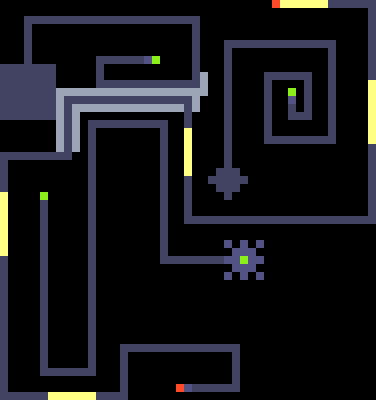Element:WIFI
 Wireless transmitter, transfers spark to any other wifi on the same temperature channel. | |
| Properties | |
|---|---|
| Section | Electronics |
| Spawn temperature | 22°C |
| Heat Conductivity | 0% |
| Relative weight | 100 |
| Gravity | 0 |
| Acid dissolve rate | 0.2% |
| Flammability | 0 |
| State | Solid |
| Transitions | |
| High pressure |
|
| Source code | |
Creation
Only with brush, cannot be created with reactions.
Usage
WIFI can accept SPRK from every conductive solid material, except for NSCN. The only materials which WIFI will transmit SPRK to are NSCN, PSCN and INWR.
There are 101 channels available to WiFi. A WiFi's particle is channel determined by it's temperature. Each channel is 100 kelvins/Celsius apart. The first channel ranges from -273.15C to -200C, and after each channel is 100C apart, so that the next channel is -200C to -100C, and so on.
This means, that all WiFis will get the signal and spark the nearby materials when one gets sparked. WiFi particle can work both as a sender and a receiver.
WiFi signals cannot switch channels. This means that if a WiFi with channel 10 sends a signal, a WiFi with channel 20 will not receive it.
How to use, with pictures
Wifi is actually very easy to use.
Wifi element can accept spark from any metal (Except NSCN), but can only give spark back to NSCN, PSCN and INWR. As you can see in this image, the spark is going into WIFI at the end..
...And then back out the other WIFI particle, which is surrounded by an excessive amount of NSCN just for example.
Different particles of WIFI have a preset frequency, and can send sparks over ANY distance without any lag at all. There are 99 frequencies, all of which are 100 degrees apart, a link to all others in the same frequency will be shown when mouse over one of them. They behave like insulation with heat, and must manually be heated in order to change the frequency of the element, which visibly changes color to reflect this. For example here, the WIFI on the outside is -270 temp, while the inside is 700 temp. Particles of WIFI do not exchange heat with any other particles.
It should be noted that wifi channels start with -273.15 to -200.01 being the first channel, but from there they go by hundreds (-200 to -100.01 being the next)
As a result of this mechanic, any WIFI particles that get sparked will all release a spark if they're nearly the same temperature. If you have 20 WIFI particles and only one of them gets a spark, if all the WIFI particles are nearly the same temperature, then they will all release a spark at the same moment. In this example, I only added one particle of WIFI, but it received a spark too. You can't easily see, but there's one particle of NSCN touching it that allows it to give off spark.
Lastly, WIFI particles of different frequencies will not give spark to one another. You may use this to make sure that a spark to one wifi will not spark all of them by accident, and with 99 channels you can massively change the way electronics are designed. In this example, I have the wire set up to infinite loop.
Examples
| A Tic-Tac-Toe game using WiFi. First result when searching "wifi" from Powder Toy. | 105313View save 105313
|
| The device in this save reads incoming WiFi signals and tells the channel they came from. | 684780View save 684780
|
| Language: | [[::Element:WIFI|English]] |
|---|


